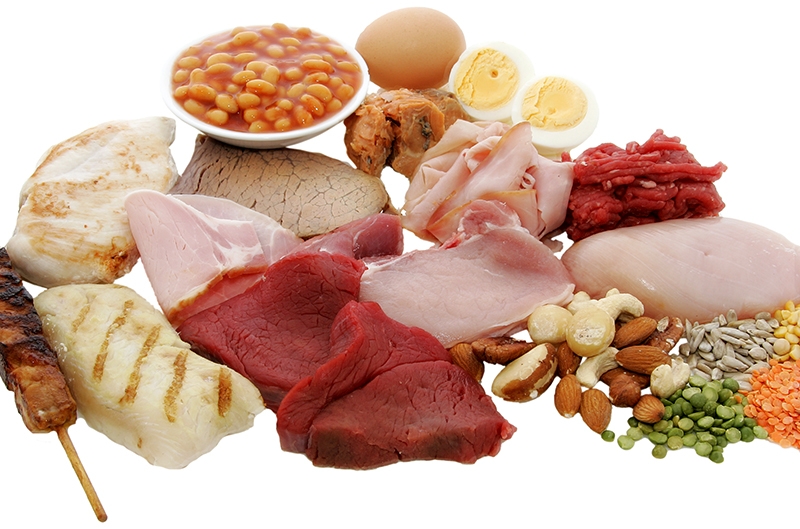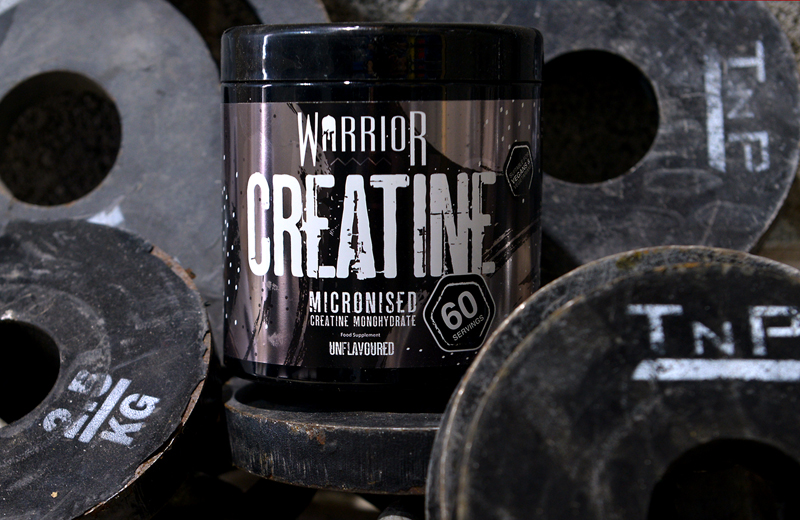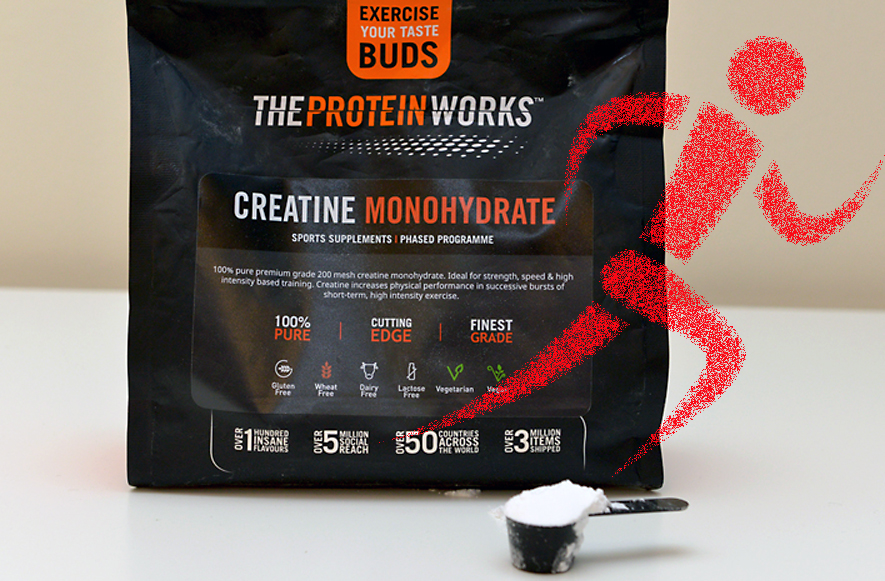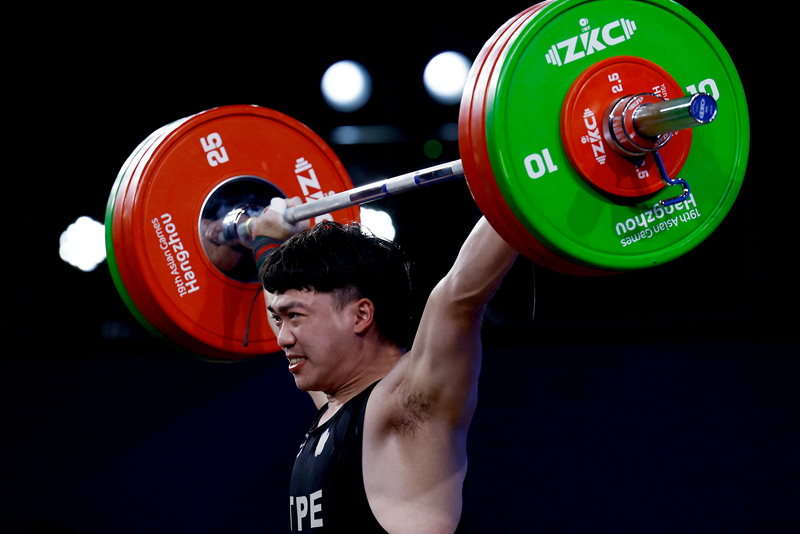You are viewing 1 of your 1 free articles. For unlimited access take a risk-free trial
Amino acids and performance: brain vs. brawn?

Can pre-exercise single amino acid supplementation improve sport performance? Andrew Hamilton looks at what the most up-to-date evidence has to say…
Amino acids are the building blocks of all proteins, including muscle protein. Unsurprisingly therefore, amino-acid nutrition has been extensively studied in relation to muscle recovery/repair following exercise, and of course muscle mass and strength gains. There are nine ‘essential’ amino acids, which the body needs to construct proteins. In all proteins, these amino acids are chemically linked together to form long chains (using so-called ‘peptide bonds’ – see figure 1) ie they are rarely found as ‘free’ amino acids in Nature. There are also a number of other ‘non-essential’ amino acids, but these can all be synthesized in the body from essential amino acids. The key point here is that whenever we consume foods containing amino acids – ie protein foods such as meat, fish, milk, cheese, eggs, nuts, beans etc – we always consume a wide mix of all the amino acids.Figure 1: Peptide bonding

Top: two amino acids come together during which two hydrogen atoms and an oxygen atom are eliminated forming water. Bottom: the two amino acids are now chemically joined with a peptide bond to form a protein fragment.
A huge amount of research has been carried out into the role of protein and its constituent amino acid building blocks for recovery and exercise performance, and much of this has been extensively discussed in a number of previous Sports Performance Bulletin articles. Interested readers are directed to this link, which details a few of these articles. In short, we can summarize some of the key findings from recent research as follows:
- Sophisticated nitrogen balance studies have suggested that the optimum protein intake range for strength and power athletes is in the region of 1.5-2.0g/kg/day(1).
- Regarding the 1.5-2.0g/kg/day range, strength and power athletes are recommended to consume protein intakes near to the top of this range; while endurance athletes might need slightly lower amounts(2).
- Relating to the point above, temporary ingestion of higher quantities during intense periods of training may provide additional benefit in terms of recovery and muscle metabolism.
- Athletes should ingest 0.25-0.3g/kg (around 20-25g in total) of a quality protein source such as whey in the immediate period after exercise, and certainly no later than two hours post exercise(2). This practice will maximally stimulate signalling proteins known to stimulate muscle growth and recovery.
- When training loads are heavy and stressful, a high-protein diet containing 3.0 grams of protein per kilo of bodyweight per day may provide additional immune support and reduce the incidence of infections and illness (worth bearing in mind during the winter months)(3).
Brain vs. brawn
As mentioned above, whenever we consume protein-rich foods, we always consume a wide mix of all the amino acids. These amino acids are released from the protein through digestion (which breaks the peptide bonds), where they can be absorbed and reassembled to generate the human proteins required for muscle repair and growth. Nearly all of the research in the literature to date has looked at the consumption of protein mixes or pure proteins such as whey, and how they impact on muscle metabolism – and therefore recovery and performance. By contrast, very little research has been carried out on the consumption of single amino acids and performance, with most of what has been carried out focusing on branched chain amino acids (BCAAs – see this article for a more in-depth discussion). Even then, most BCAA research has looked at the roles of these amino acids in muscle metabolism and recovery.Single vs. mixed amino acids
There are two simple reasons why single amino acids have been little researched for exercise performance: 1) they taste foul (rather like old socks!) and 2) free-form amino acids have always been difficult and expensive to produce on a large scale. However, when cost is not an issue, it is possible to isolate single amino acids - and that’s where things get rather interesting. That’s because some of the key neurotransmitters in the brain are very closely related chemically to certain individual (ie unlinked) amino acids, and that’s because these neurotransmitters are synthesized from certain amino acids in the brain. An example is the neurotransmitter serotonin (low serotonin levels are known to be a prime cause of depression), which is synthesized in the brain in a 2-step process from the amino acid tryptophan (see figure 2).Figure 2: Synthesis of serotonin from the amino acid tryptophan*

This means that taking a dose of a single amino acid can affect brain chemistry in a way that doesn’t occur when consuming a mix of amino acids (ie eating protein). This altered brain chemistry can also affect hormone balance in the body. An obvious question at this point is to ask why can single amino acids produce this ‘brain chemistry/hormone’ effect while mixtures of amino acids as consumed in protein generally don’t? The reason is that many of these different amino acids ‘compete’ to cross the blood brain barrier. When taking a single amino acid, there are no other amino acids to compete for absorption. Therefore, consuming a single amino acid, away from others, means that it can cross this barrier unimpeded. This significantly raises the level of that amino acid in the brain, potentially affecting brain chemistry.
Single amino acids and sport performance
If single amino acid consumption can alter brain chemistry/function and affect hormone balance, are there some amino acids that could help alter your brain chemistry/function and hormone balance in a way that is favorable for sport performance? Unlike protein and muscle metabolism, this is a topic where there is a relative paucity of data in the literature. However, some studies have been carried out with interesting results, and in the next section, we’ll look at the evidence for and against the use of amino acids for performance.*Tyrosine
One amino acid that has received particular attention is tyrosine. Tyrosine is the precursor to the ‘catecholamine’ neurotransmitters dopamine and norepinephrine. These catecholamines are produced by sympathetic nervous system activation, which results in activity autonomic arousal – (more commonly known as the fight-or-flight stress response) – exactly what athletes need during flat-out exercise! In theory, increasing tyrosine uptake should positively influence catecholamine-related psychological functioning. But what does the science say?Unfortunately, the results are rather mixed. One study on cycling performance in very hot conditions found that consuming 150mgs of tyrosine per kilo of bodyweight one hour beforehand improved the time to exhaustion of the cyclists(4). The researchers surmised that the tyrosine helped the cyclists combat the physical stress induced by the heat/exercise combination. It has also been shown that depleting tyrosine in the brain (by administering a tyrosine-free amino-acid mix) worsens exercise performance in the heat(5).
In contrast however, a 2015 study concluded that there were no significant effects of tyrosine on exercise performance(6). However, it did find that tyrosine supplementation counteracted the decrements in working memory and information processing induced by demanding situational conditions such as extreme weather or cognitive load. In other words, for athletes whose events involve information processing in demanding conditions, tyrosine may help cognition thanks to its ability to combat depleted brain catecholamine levels.
Meanwhile, a study on military recruits found no benefits – either in terms of physical performance or cognition – when consuming pre-exercise tyrosine(7). But just to confuse matters further, a review study (pooling the results from a number of previous studies) found that tyrosine supplementation can boost cognition but has little effect on exercise performance(8). These findings (for cognitive but not exercise benefits) were replicated by another large review study also carried out that year(9).
*Phenylalanine
As a single amino-acid, phenylalanine has been little researched in the context of exercise. However, a recent study found that while there were no cognitive benefits, a pre-exercise dose of three grams of phenylalanine significantly enhanced fat burning during sub-maximal exercise(10). Likewise, another study found that phenylalanine (in combination with arginine and alanine) stimulated fat burning during exercise(11)This fat-burning effect is most probably because phenylalanine ingestion increases carbohydrate storage hormone glucagon, forcing the body to derive more fat from fuel. But while this approach might be good for fat-burning during early-season training, anything that reduces carbohydrate availability is NOT recommended for athletes engaging in competition, where maximum performance matters!
*Taurine
Taurine is another amino acid of interest, and one which finds its way into a number of pre-exercise drinks where it is claimed to enhance focus and performance. Once again however, the evidence for its benefits is far from clear. A study on runners found that six grams of taurine taken pre-exercise did not improve high-intensity running performance, although there was a non-significant increase in the ability of runners to sustain an oxygen deficit (12). Meanwhile, an earlier study on cyclists found that 1.7 grams of pre-exercise taurine didn’t enhance time trial performance, but did increase fat oxidation(13).In its favor though, a review study carried out in 2018 pooled the data from seven previous studies on taurine and exercise performance(14). It found overall that there was a small but modest performance benefit for endurance performance. However, there was no evidence that taurine boosted sprint/high-intensity performance or mood or cognitive performance.
There’s also some evidence that taurine ingestion prior to exercise can enhance fat burning. In a study published earlier this summer, researchers found that six grams of TAU supplementation 90 minutes before a single bout of aerobic exercise in a fasted state was sufficient to increase the lipid oxidation post-exercise in healthy young men(15). This notion is supported by a 2018 study on swimmers, which found taurine supplementation 120 minutes before performing a maximal swimming effort increased blood lipid (fat) levels and reduced the proportion of energy derived from carbohydrate – ie it exerted a small carbohydrate-sparing effect(16) Despite this ‘fat-burning’ effect however, there were no direct performance benefits noted.
*Theanine
A final mention is for the less well-known amino acid called theanine. Theanine is a naturally occurring amino acid found in small amounts in tea. There’s particular interest in theanine as it appears to favorably affect cognitive function, especially when combined with caffeine. In particular, doses of 100-200mgs of theanine combined with 50-150mgs of caffeine have been found to:- Enhance cognitive function and mood(17).
- lmprove target-specific attention to visual stimuli by decreasing mind wandering(18).
- Improve and prolong vigilance during a sustained attention task(19).
Making sense of the findings
The evidence for the pre-exercise use of single amino acids is much patchier than that for the use of protein for muscle recovery. However, athletes competing in high-stress environments and whose sports require cognitive processing might benefit from tyrosine supplementation. Phenylalanine might help to increase fat burning during sub-maximal endurance exercise but is unlikely to benefit (and could harm) performance during high-intensity exercise. Endurance athletes may receive a small benefit from taurine supplementation but the evidence is weak. However, there is some evidence that pre-exercise taurine may help increase fat oxidation, which could be useful for athletes seeking to reduce of maintain body fat levels – for example when returning to sport after a layoff. Theanine in combination with caffeine (and perhaps tyrosine too) on the other hand could be worth trying for athletes whose sports require visual processing, motor skills and concentration for example when learning or practicing new techniques. This effect may be particularly noticeable when the athlete is fatigued yet needs to maintain high levels of concentration.References
- Proc. Nutr. Soc. 2011, 70, 205–214
- Nutrients 2019, 11, 1289
- Brain Behav Immun. 2014 Jul;39:211-219
- Eur J Appl Physiol. 2011 Dec;111(12):2941-50
- Eur J Appl Physiol. 2013 Jun;113(6):1511-22
- Pharmacol Biochem Behav. 2015 Jun;133:1-6
- Med Sci Sports Exerc. 2016 Feb;48(2):277-80
- Mil Med. 2015 Jul;180(7):754-65
- J Psychiatr Res. 2015 Nov;70:50-7
- J Int Soc Sports Nutr. 2017 Sep 12;14:34
- Int J Sport Nutr Exerc Metab. 2016 Feb;26(1):46-54.
- Appl Physiol Nutr Metab. 2016 May;41(5):498-503
- Int J Sport Nutr Exerc Metab. 2010 Aug;20(4):322-9
- Sports Med. 2018 May;48(5):1247-1253
- Nutrients. 2020 May 25;12(5):1540
- Amino Acids. 2018 Jan;50(1):189-198.
- Nutrients. 2017 Dec 7;9(12). pii: E1332
- Nutr Res. 2018 Jan;49:67-7
- Neuropharmacology. 2012 Jun;62(7):2320-7
- J Int Soc Sports Nutr. 2019 Nov 26;16(1):56
Newsletter Sign Up
Testimonials
Dr. Alexandra Fandetti-Robin, Back & Body Chiropractic
Elspeth Cowell MSCh DpodM SRCh HCPC reg
William Hunter, Nuffield Health
Newsletter Sign Up
Coaches Testimonials
Dr. Alexandra Fandetti-Robin, Back & Body Chiropractic
Elspeth Cowell MSCh DpodM SRCh HCPC reg
William Hunter, Nuffield Health
Keep up with latest sports science research and apply it to maximize performance
Today you have the chance to join a group of athletes, and sports coaches/trainers who all have something special in common...
They use the latest research to improve performance for themselves and their clients - both athletes and sports teams - with help from global specialists in the fields of sports science, sports medicine and sports psychology.
They do this by reading Sports Performance Bulletin, an easy-to-digest but serious-minded journal dedicated to high performance sports. SPB offers a wealth of information and insight into the latest research, in an easily-accessible and understood format, along with a wealth of practical recommendations.
*includes 3 coaching manuals
Get Inspired
All the latest techniques and approaches
Sports Performance Bulletin helps dedicated endurance athletes improve their performance. Sense-checking the latest sports science research, and sourcing evidence and case studies to support findings, Sports Performance Bulletin turns proven insights into easily digestible practical advice. Supporting athletes, coaches and professionals who wish to ensure their guidance and programmes are kept right up to date and based on credible science.












